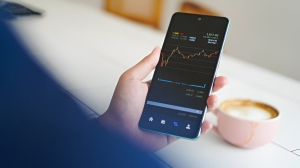Introduction – Why Scaling a Company Logo Matters
A company logo is more than a visual mark — it is the face of a brand, appearing everywhere from a smartphone app icon to a highway billboard.
In multilingual regions such as the UAE, the challenge becomes greater when the logo must seamlessly combine Arabic and Latin scripts without losing clarity or brand identity.
When a logo is designed without a scalable system, it risks becoming illegible at small sizes or distorted at large scales. The solution lies in a structured design method: a baseline grid, script pairing rules, minimum size standards, contrast testing, and a set of scalable file formats.
The Baseline Grid – Foundation of a Scalable Logo
Understanding the Grid
A baseline grid is the invisible structure that aligns every part of a logo. It keeps proportions consistent when the logo is resized. In bilingual designs, the grid helps maintain visual balance between scripts with different shapes and reading directions.
For example, the IRH bilingual branding system uses a stroke-width proportion to ensure both Arabic and Latin text align harmoniously.
Applying X-Height Ratios
The x-height is the height of lowercase letters in Latin script, excluding ascenders and descenders. When pairing Arabic and Latin, designers often align the Arabic cap height with the Latin x-height. This alignment creates balance and avoids one language overpowering the other.
Clear-Space Rules
A logo needs visual breathing space to maintain its impact. A standard practice is to use the stroke width as a multiplier — for instance, a clear space equal to twice the stroke width around all edges. This ensures that no text or imagery interferes with the logo's readability.
Arabic and Latin Pairing Rules
Harmonising Scripts
Pairing two scripts requires more than simply placing them side by side. Typeface choice is crucial. A minimalist Latin sans-serif works well with a modern Arabic script of similar weight and stroke contrast. Avoid mismatching heavy Arabic calligraphy with ultra-light Latin fonts, as it creates imbalance.
Reading Direction and Hierarchy
Arabic reads right-to-left, while Latin reads left-to-right. The pairing must respect both reading flows while keeping the overall composition coherent. Many bilingual logos use stacked or mirrored layouts to maintain symmetry.
Maintaining Brand Consistency
Consistency ensures brand recognition. This means keeping color palettes, proportions, and stroke weights uniform across all versions.
The bilingual Dubai Metro logo and Emirates Airline branding are prime examples where Arabic and Latin co-exist without one overpowering the other.
Minimum Size Standards for Every Medium
Digital and App Icon Sizes
For digital use, a logo should never drop below 24 pixels in height. At such small scales, remove taglines, simplify details, and thicken lines to maintain legibility. Mobile app icons are often reduced to a single emblem or initials.
Print and Outdoor Standards
For outdoor signage, size determines visibility. The “1-inch text height equals 10 feet viewing distance” rule works as a guideline.
A billboard viewed from 300 feet away would require text at least 30 inches high. For hoardings in high-traffic roads, logos are typically 3–6 feet tall.
Special Production Cases
In embroidery or laser engraving, fine details disappear. Minimum letter height should be at least 1/8 inch. For vehicle wraps, logos should be large enough to be read from passing cars — usually 2–3 feet tall on doors or panels.
Scaling from App Icon to Billboard – A Practical Approach
Designing for Multiple Formats
A scalable logo system starts with a master design and several simplified variations:
-
Full logo with bilingual name and emblem
-
Horizontal lock-up for website headers
-
Stacked or square version for social media
-
Icon-only for small-scale use
Using vector formats (SVG or EPS) ensures sharpness at all sizes, from 24px to 24 meters.
Testing Scalability
Before finalizing a logo, scale it from 3% to 6400% in design software like Adobe Illustrator.
This checks whether strokes, shapes, and letterforms remain legible. Print tests at both micro and large scale give real-world results.
Adapting Line Weights and Spacing
At small sizes, fine details should be removed and line weights thickened. At large sizes, more negative space is required to prevent crowding, especially in Arabic script.
Contrast Testing for Sunlit Signage
Why Contrast Matters Outdoors
In bright sunlight — common in Dubai — low-contrast designs fade into the background. Dust, reflections, and glare further reduce visibility.
Testing Process
Simulate outdoor conditions in design software by applying glare and reduced contrast filters.
Test in both full color and monochrome to ensure the logo works in any environment.
Material Considerations
When producing outdoor signage, use matte laminates or anti-glare vinyl. Reflective surfaces can be used for nighttime visibility but must be balanced for daylight performance.
The Free SVG Kit – What to Include
Multiple Lock-Ups
The SVG kit should include:
-
Horizontal bilingual version
-
Stacked bilingual version
-
Icon-only emblem
-
Latin-only and Arabic-only variants
Clear-Space Masks
Include overlays showing minimum safe margins for each logo variation.
This ensures other elements never intrude into the logo's visual space.
Monochrome and Contrast Versions
Offer full color, black-on-white, white-on-black, and high-contrast color schemes optimized for outdoor use.
Before and After – Readability Gains
Small-Scale Comparisons
Show a 24px app icon with intricate details alongside a simplified icon.
The difference in clarity demonstrates why reduction is necessary.
Large-Scale Comparisons
Show a billboard under sunlight with low-contrast colors beside one with high-contrast adjustments.
The legibility improvement is immediate.
Measuring the Difference
While results vary, physical mockups allow stakeholders to see the improvement and make informed decisions.
Best Practices for Designing a Scalable Bilingual Logo
-
Use a grid system from the start to maintain proportions
-
Select typeface pairs that visually align in weight and structure
-
Test early and often at extreme sizes
-
Maintain consistency across colors, proportions, and spacing
-
Prepare multiple file formats for web, print, and outdoor use
-
Prioritize contrast for maximum visibility in real environments
Conclusion – Designing with Longevity in Mind
A well-designed bilingual logo is a long-term asset that performs across every platform and size.
In a region where Arabic–Latin duality is essential, following a scalable grid system, respecting size thresholds, and ensuring high contrast are key steps toward a professional, enduring identity.
Whether it's a 24px app icon or a 24m billboard, the right design approach ensures your company logo remains clear, impactful, and culturally respectful — ready for both digital screens and sunlit streets, and capable of standing out in any branding logo of a project, even when customers search for business logo designers near me.





